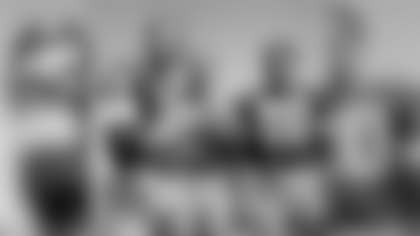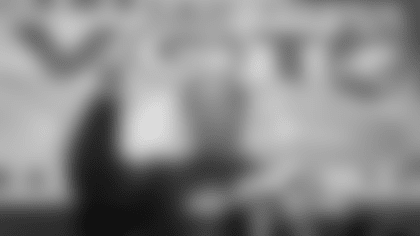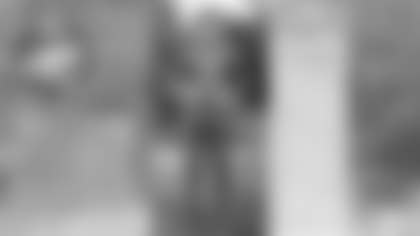Jack from Indianapolis
You can find things online about Curly Lambeau having another son. Is that true? Did that have something to do with people saying he had gone Hollywood?
Yes, Earl Louis Lambeau II was born in 1938. Curly was 39 years old. The child's mother, according to a birth record, was 29.
I contacted Earl 11 years ago by telephone and he reluctantly agreed to meet me in a parking lot outside a spring training site in the Phoenix area. He declined to be interviewed for a story, but we worked out a deal.
He was interested in the health history of the Lambeau family and I had obituaries, as well as the causes of death, for Curly, along with his parents, grandparents and siblings. So I shared the information with him.
In return, he talked to me at length about his life, his relationship with his father and other family matters. He also consented that if I ever wrote a book about the history of the Packers that I could use what he told me. This was before I was hired as Packers historian and that was my plan from the start. I was retired and working on what I hoped would be a definitive history of the franchise.
Per our agreement, I'm not going to reveal anything here that can't be found online or anything of a personal nature that I didn't know before our meeting, but I'll share some thoughts.
- It was a good interview, the kind that stirs your juices when you're an old newspaperman. He was honest, sincere and, I sensed, a loving son of his mother. He also explained his relationship with his father – not to mention, his mother's relationship with Curly – in less than glowing terms. Later, I also checked out some of the things he told me. For example, he said he was a decent high school athlete, so I visited the city where he grew up, searched through his high school yearbooks and the hometown newspaper for those years, and found confirmation of it. He was a three-sport athlete who as a senior started at fullback on a good football team, led a bad basketball team in scoring and placed second in the 880-yard run in his conference track meet.
- Not only was his life story interesting, but his mother's was as well. That didn't surprise me. I knew some of the details beforehand about how she and Curly met, along with her background as a Miss California contestant. And because that wasn't part of our agreement, I wrote about it in some detail in my Packers Heritage Trail book, published in 2017. **http://www.packersproshop.com/packers-heritage-trail-book**
One other point: As you noted, the answer to your question is no longer a secret and that's one of my purposes here: To set the record straight, not so much about him, but about his mother, especially in view of what other authors have written. Not surprisingly, all things considered, those writers were negligent in their research and have done the family a disservice.
In 2017, David Zimmerman published a book that stated: "While researching for his four-volume Packers history, author Larry Names came across an episode in early September of 1941 that involved Lambeau, Arnie Herber, and Susan, Lambeau's second wife, whom he had divorced earlier that year. Susan showed up in Green Bay eight months pregnant. Since he was convinced the child was not his because he had evidence of her indiscretions in their home in Los Angeles, Lambeau put the word out that no one on the team could see her. He refused to see her, even though she insisted the child was Curly's. He denied it and said it was a result of her fooling around. It was Susan's intent to force Curly to pay child support as well as the medical bills when it came time to deliver."
Lambeau might have spread rumors about his second wife and denied the child was his in conversations around Green Bay, but the above excerpt is nothing more than malicious gossip, if no longer libelous.
Obviously, neither author bothered to look into the divorce agreement. In court, Lambeau didn't contest that the child was his. Instead, he agreed to pay child support.
What's more, Zimmerman and Names got their facts wrong, as usual. Zimmerman wrote Sue Lambeau showed up in Green Bay in 1941, eight months pregnant. That was three years after her son was born.
Names wrote, "When Lambeau returned to Green Bay in 1940, he brought a new bride with him. The following year, he came home alone having gone through another divorce…" Names added that Lambeau's then ex-wife showed up during the week of the Packers' second preseason game in 1941 "very much pregnant."
Curly Lambeau and his second wife were married in 1935. Sue Lambeau went with him later that year to Rhinelander, where the Packers held their first out-of-town training camp, although it lasted only a week. Their only child was born three years later. The couple was divorced in March 1940.
Was this the start of the grumblings in Green Bay about Lambeau going Hollywood? Might have been.
He started heading to California in late December, not long after the football season ended, as early as 1930 to scout either the East-West Shrine Game or Rose Bowl. But the time he spent on the West Coast seemed to increase during his two marriages to women with California backgrounds. Sue Lambeau was living in Los Angeles at the time she married Curly and apparently had been given bit parts in some Hollywood productions.
Lambeau's third wife was the ex-wife of a Hollywood film director. She lived in Malibu.
So Curly spent a lot of time during the offseason in California, if not Hollywood.
Jon from New Brighton, MN
Has anyone done research on the military career of Donald Lambeau, son of Curly? All I can find is that he enlisted on Feb. 26, 1941, and was discharged from the Army on Oct. 27, 1945.
Don Lambeau underwent basic training at Camp Grant, Ill., and then was assigned to Fort Lewis, Wash., where he became a sergeant in the signal corps. He served as an instructor at Fort Lewis and then headed overseas in July 1943.
About three months later, he was assigned to a survey party that helped lay out a 100-mile route for telephone lines through the enemy-infested jungles of New Guinea and later received a "meritorious conduct" citation for his efforts.
He also became seriously ill in New Guinea with scrub typhus, which is spread through bites by infected insects. After recovering, Don was stationed in the Philippines before being discharged at Wisconsin's Camp McCoy.
Don Lambeau died in 1984 at age 63.
Janean from Cadott, WI
I just read your Cliff Notes from Aug. 2018 and noted your comments about Native American Packer players. I remember a story in Packer Plus, which stated Pro Football Hall of Famer Arnie Herber was part Native American. There also is a YouTube video about Herber ("The Arnie Herber Story") narrated by his grandson. The video claims Herber was of Belgian and Native American Indian descent.
Good question, so I presented it to Mary Jane Herber, Local History & Genealogy Librarian at the Brown County Library.
As stated in the video, Arnie was the son of Peter and Sophia Herber.
Mary Jane Herber tells me Peter Herber's great grandfather, on his paternal side, was born in Germany and his great grandmother in Bavaria. On Peter's maternal side, both his great grandfather and great grandmother were born in Germany. On Sophia's paternal side, her great grandfather and grandmother were born in Belgium. On Sophia's maternal side, all Mary Jane found was that the grandmother was born in Belgium. But, in all likelihood, that means the great grandparents were born there, too.
I understand there are family secrets that you can't uncover in official documents, but if Arnie was of Native American descent I don't know where it started.
Tom from Madison, WI
Where can I find the rosters for the Packers' first two years of operation? My granddaughter has a friend whose great grandfather, an Oneida tribal member, played on the early teams. I feel those original Packers need recognition, too.
I agree and we have made a point of honoring our original players during our 100th season celebration. We created an exhibit in the Packers Hall of Fame honoring our 1919 team and we have devoted much of page 524 in our 2018 Media Guide to the 1919 and 1920 Packers, including rosters you can find at this link:
The Oneida Tribe has a rich football history that pre-dates the Packers and includes several early stars from Pop Warner's powerhouse Carlisle Indian Industrial School teams, but I don't believe there were any tribal members on the 1919 or 1920 Packers.
Alan from Esterhazy, Saskatchewan
What year did the Packers first print a media guide?
I took a side trip to Regina once just to check out old Taylor Field. Aren't the Saskatchewan Roughriders the Packers of the CFL? Breaks my heart, though, to read that the Roughriders are now playing in a stadium described as "opulent." Right now, the No. 1 sporting event on my bucket list is the Grey Cup, but I want to watch it in a stadium that has some tradition and age to it.
Based on what I've found so far, I consider 1930 to be the first year the Packers published an early version of a media guide. That year the Green Bay Football Corporation printed a publicity pamphlet with lineups, the schedule and notes about the team. The next year, player profiles were added. I've not found publicity booklets for 1932 and '34, presumably because the Packers didn't have the money to print them. Keep in mind, in 1934, they were in receivership and already by 1932, they knew they were in deep financial trouble.
In 1936, the title on a snazzy gold cover for a 13-page booklet about the team was "1936 Football Publicity Green Bay Packers."
Over the next two decades, the booklet also was called a "Press Book," then a "Press & Radio Guide" and then a "Press, Radio and TV Guide." Starting in the 1960s, the titles included "Press Guide," "Press Book," and "Official Press Book."
The first year "Media Guide" was part of the title was 1971. Then from 1978-89, there was no title. All that was written on the cover was "Packers" and the year. It went back to being a media guide in 1990 and it has been called that ever since.
Perry from Elkhorn, WI
Was the lettering on the 1921 uniforms, with Acme Packers written on the front, white or gold?
I have never seen anything written about the color in newspapers or any early team publications, but Brent Hensel, our curator, took part in a meeting involving a uniform manufacturer with company roots dating to 1921, and the consensus was the lettering was most likely white because of the time period. That makes sense to me for two reasons: 1) Listen to the experts and those people in their field. 2) If white lettering would have been cheaper than yellow, it's hard to believe cost wouldn't have dictated the decision. Look at the picture. You can see the front of 12 jerseys and only five had Acme Packing written on the front. From what I've read, the Packers had enough money in those first few years to buy only so many jerseys or sweaters, as they called them then. I would assume that at least partly explains why most of the players on the team apparently had no lettering on the front of their jerseys.















